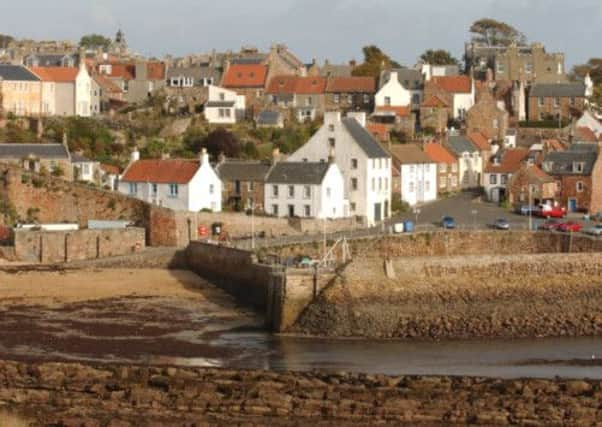Walk of the week: St Monan’s to Crail


During a November spell of not dissimilar weather (south-westerly winds of 40 to 55mph making walking difficult on the high tops and giving severe wind chill) it was sensible to stay as near to sea-level, and as far east, as possible, so where better to go than the East Neuk of Fife, its burghs built around sheltered bays or “a fringe of gold on a beggar’s mantle” as described by James II.
This time John came with us on the St Monans/Crail section. A pre-placed car at Crail meant that on the seven-mile linear walk we were propelled by the blustery cold wind on our backs – another bracing outing to clear the cobwebs. Quite unlike the Elie/St Monans stretch, this section is less undulating and closer to the sea and some of its rugged character is lost in passing through Pittenweem and Anstruther where, despite being well-signposted, the way can be a bit confusing.
Advertisement
Hide AdThe East Neuk railway prestige train, the Fife Coast Express, was ideal for those middle-class families who took summer quarters while the paterfamilias travelled daily to business in Glasgow or Edinburgh. However, after the war there was a steady decline in traffic and the line was closed in 1966. Most of the track bed has been reclaimed for agricultural purposes. Only a few bridges can be identified and little now remains of the St Monans, Pittenweem, Anstruther and Crail stations.
There are, however, regular bus services – phone Traveline, 0871 200 2233 – and more information is available at www.fifecoastalpath.co.uk
THE ROUTE
From St Monans harbour, head slightly uphill to reach Rose Street and follow directions to the recently restored 18th century windmill, used to pump seawater into the nearby salt pans. Thirty-two tons of seawater were required to produce one ton of salt. Also pass a number of old sea bathing places, no longer maintained by the district council – bathers use them at their own risk. We were not tempted.
On our day, due to coastal erosion, work was being carried out on the path, avoided by a short stepped path detour to higher ground above the FCP.
Reach attractive Pittenweem of white houses with red pantiled roofs. Go along midshore by the harbour, then head slightly uphill and by Abbey Wall Road to the cliff tops. Continue past Anstruther golf course (if golf is in progress, keep to the right) and so into Anstruther, once three medieval boroughs – Anstruther Easter, Anstruther Wester and Kilrenny – but united since 1929 and also including neighbouring Cellardyke.
Go up High Street, cross St Andrews Road, then down to the busy and large harbour. The open-all-year Scottish Fisheries Museum is well worth a visit.
Advertisement
Hide AdIt is then a long urban though pretty stroll through Anstruther Easter where land was once owned by the monks of Balmerino Abbey, then pass the small Cellardyke harbour. Looking out across the Forth, the Isle of May, a Nature Reserve, accessed by boat from Anstruther, is easily seen. More distant is the Bass Rock.
The FCP then returns to the shore line with a caravan park on the left. The next section is very level with parts of the path rather too close at times to the sea. Later pass the strange distorted sandstone cliff formation known as Caiplie Caves. Continue along the cliff top overlooking Crail, another must-photograph spot looking down to the small harbour and pretty houses. You are now just two miles south-west of Fife Ness, the most easterly part of the Kingdom of Fife.
Advertisement
Hide AdMap Ordnance Survey map 59, St Andrews, Kirkcaldy & Glenrothes
Distance 7 miles
Height Negligible
Terrain Mixture of coastal path and urban walks
Start point St Monans harbour
Time 3-4 hours
Nearest villages/towns St Monans, Pittenweem, Anstruther and Crail
Refreshment spot Crail Harbour Gallery and Tearoom, closed December and January